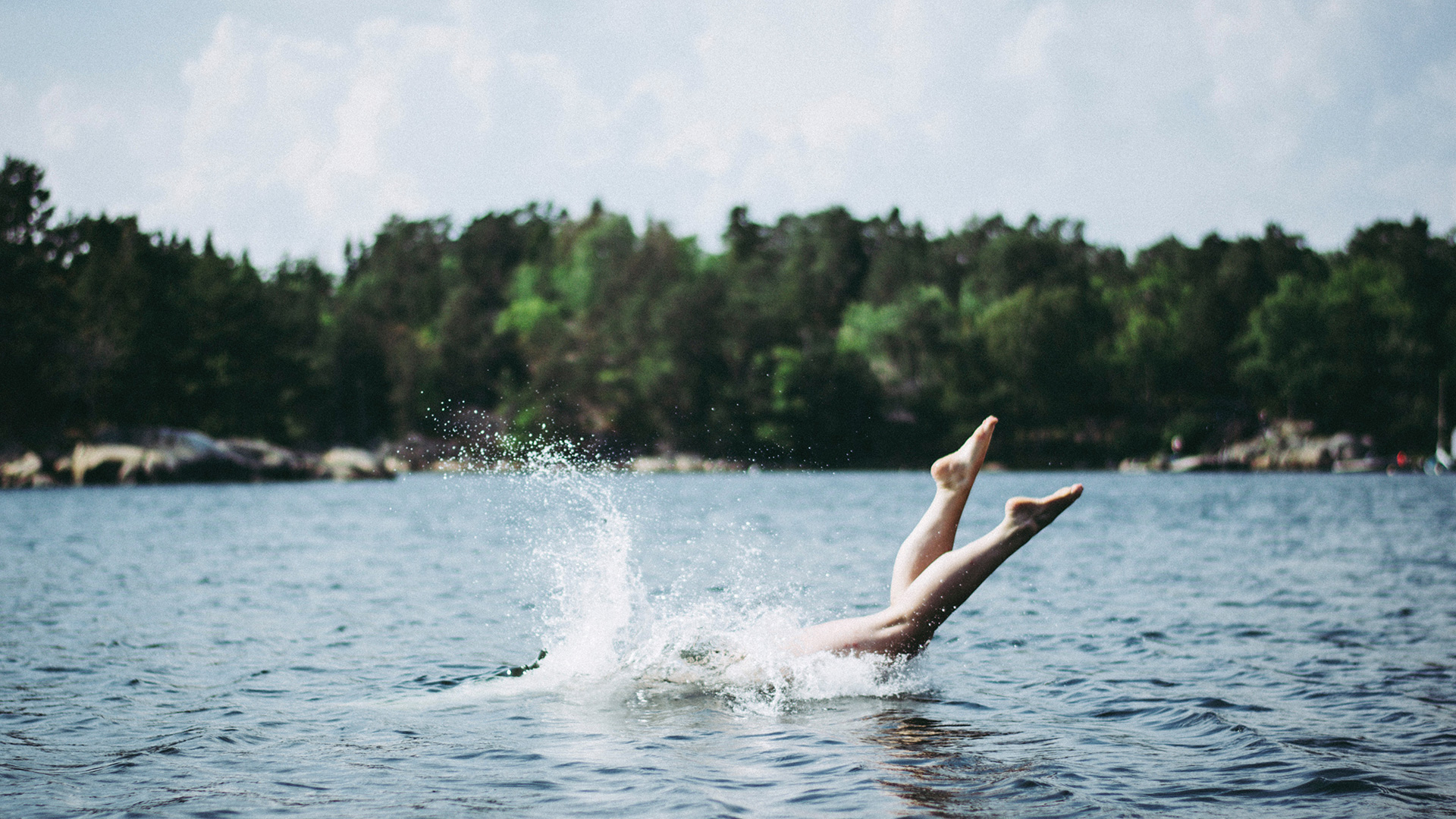I tried daily wild swimming and I'm a complete convert
Turns out cold water swimming is not just for show offs and masochists


When the country went into lockdown and everyone realised that conducting your work, social life and relaxation time entirely from a handful of rooms was suboptimal, from both a mental and physical point of view, we saw a big boom in popularity in certain outdoor activities. One of these was wild swimming.
On paper, you can see why it kicked off. It's naturally socially distanced. It's free. It requires the most minimal of kit (although there are plenty of options for gear if you get into it). For keen swimmers, it also presented the only real option, as the regular, heated, chlorinated options were off limits. It wasn't just a 'last resort' thing though – people were raving about it. Popping on a swimsuit or pair of trunks in all weathers, all seasons, and claiming it was doing wonders for their mental health.
As T3's Outdoors and Wellness editor, I'm already pretty sold on the therapeutic benefits of getting out in nature, but wild swimming always seemed a bit of a stretch to me. The kind of thing you do once, brag about to your friends and then never try again – but surely not a habit to embrace on the regular.
- Browse the best wetsuits, if you can't deal with the cold
- Stash valuables in one of the best dry bags
- Add a pair of the best swimming goggles
At the start of spring I got sent a Finisterre wetsuit set geared towards wild swimming, and realised that to review it properly I'd need to test it when it was still cold. I ventured to an outdoor swimming club based at a local stretch of river, and it was not the most successful trip. I'll say at the point that, being designed more for flexibility than full-coverage insulation, the wetsuit jacket and bottoms on test included arms but no legs. As I gritted my teeth and set off I didn't twig that I was swimming against the flow of the river, and for the first few minutes I genuinely thought that I was finding it so difficult because my body was shutting down from the cold, and I was going to die. I got out not long after.
So when I got the opportunity to head on a Thera-Sea wilderness retreat on the Cornish coast, and noticed that daily wild swims were on the schedule, I was apprehensive. By this point it was May, but as the sea temperature lags behind land by about a month, it was still pretty flipping cold (in fact, the weather was also unseasonably chilly, but that's a separate complaint). Due to a mixture of peer pressure and general stubbornness, I swam every day.
It turned into my favourite part of the trip. I enjoyed each dip more than the last – which is saying something, because on the last day the swim was scheduled before breakfast and it was chucking it down with rain. I think it's partly to do with finding your groove and partly knowing what the process is and being prepared for it, both mentally and physically.

There's the initial dread, which escalates as you stand on the bank shivering in your swimwear and trying to remember why you're doing this voluntarily. The trick, I think, is to do this bit as much as possible on autopilot, without dwelling on the next step. Shoes off, clothes off, get to the water. Getting in is painful, yes – but you know it and I know it, the best way to do it is quickly. Jump if it's safe to do so, dunk your head under as soon as possible, then keep moving. A glacial inch-by-inch descent as you get colder and colder is doing no one any favours.
Get all the latest news, reviews, deals and buying guides on gorgeous tech, home and active products from the T3 experts
After that short, sharp shock to the system, there's about 60-90 seconds of pain (that's all! It's nothing!) and then suddenly it all feels very manageable and almost refreshing. On a quiet day, with only a few people around, and nothing to focus on except moving forwards, it's weirdly meditative. The fact that it's so cold is a key ingredient, I think, too. It's a challenge, it focuses the mind. Without getting too hippie about it, it feels almost primal.
Get out before your core temperature drops too much. Afterwards there's pride and a sense of accomplishment. You might feel okay initially but the key now is to get warm as quickly as possible. Layer up in a big way, have a hot drink ready, and get your hair dry (find more in our beginner's guide to wild swimming). If you don't, the coldness can linger for hours, especially in your fingers and toes, so the trick is to head that off or it'll spoil the experience.
So in short, I think I might be a cold water swimming convert. I think back to trips to the local pool, with the overly warm and grubby feeling changing rooms, laps punctuated by dodging swimmers who are clearly, clearly, in the wrong lane for their abilities, making my way past the odd dislodged sticking plaster, and wonder how I could ever have thought otherwise.

Ruth was T3's Outdoors and Wellness Editor from 2020 to 2022, covering hiking, camping and adventure sports kit, as well as mattresses, sleep accessories, yoga and general wellness. She's now a Homes Editor at sister site TechRadar, where she deals in all things air (vacuum cleaners, robovacs, fans and air purifiers), and hair (hair dryers, straighteners and stylers).